Some of the best still photography is in movies
Once I realized that the carpal tunnel problems I was having, meaning wrist pain when working my hands hard, were not going to go away, I sold all my woodworking equipment and set about converting the woodworking shop to a home theater, with the following result:
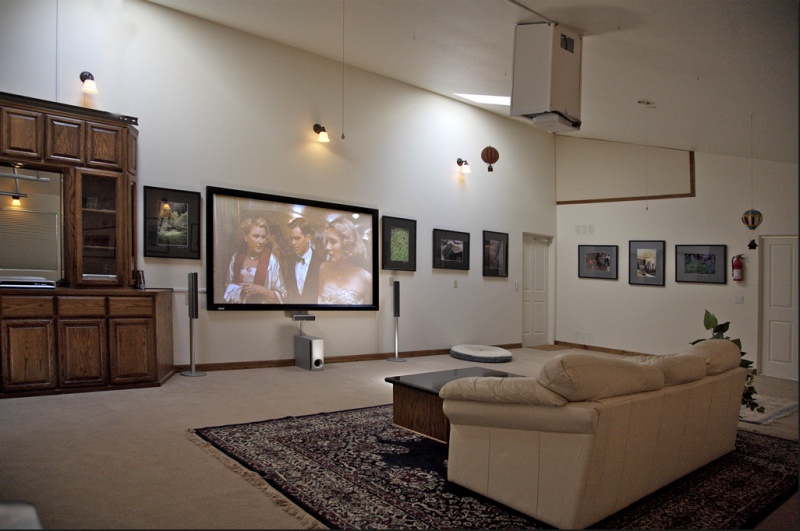
Completed in time for last Christmas, I have maintained my commitment to watching a movie a night ever since and must say I have rarely had so much fun. 1,000 watts of surround sound and a 100” screen are not that difficult to enjoy!
So with some one hundred movies added to the growing collection at home, I stopped to think what was it that I enjoyed most on the big screen, forcing a narrowing down to just three movies.
Easy.
Luchino Visconti’s ˜Death in Venice” (1971)
Sergio Leone’s ˜Once Upon a Time in the West” (1968)
and
Walter Hill’s ˜Streets of Fire” (1984)
On reflection, the common thread running through these films includes a surpassingly simple plot (writer goes to die in Venice and becomes infatuated with a young boy, gunman seeks revenge, tough guy rescues former flame from kidnappers), magnificent music (Gustav Mahler, Ennio Morricone, Ry Cooder and Jim Steinman) and stupendous settings (Venice, the great American West, 50s Chicago).
But the surpassing attribute of all three is easily identified and is the primary reason I am so attracted to these masterpieces.
Stunning still photography.
Still photography? In a movie?
Death in Venice is little more than a series of stills, making up a movie. Lush beyond belief, it’s what makes Visconti such a favorite at the old abode.
Once Upon a Time in the West emulates the Visconti style, or maybe I should say that Visconti emulates Leone, the western having been made first. Some close-ups last for minutes (minutes!) on the screen.
But Walter Hill’s Streets of Fire is the most photographically arresting of the three. Set in a permanently dark, wet Chicago, mostly under the elevated subway (the “El” in local parlance), it’s all neon, reflections, brooding atmosphere.
To illustrate, here are some stills from the great cimematographer Andrew Laszlo:
The bad guy makes his first appearance in the music hall, intending to kidnap the star heroine:
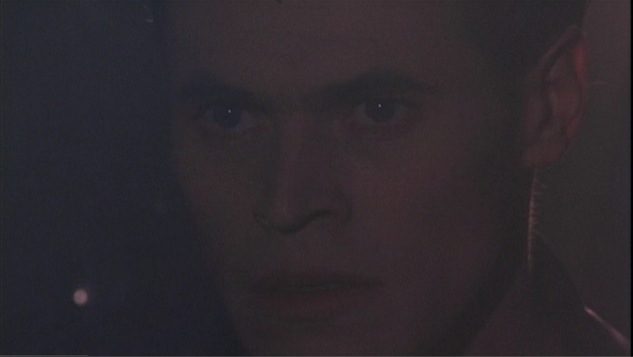
Outside the police station, the good guy is seen driving by in his hot rod:
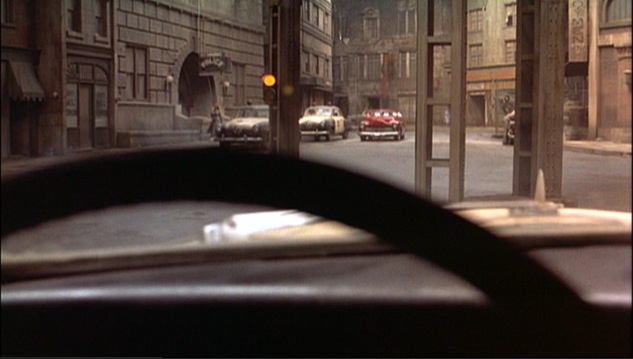
Abstract expressionism at its best:
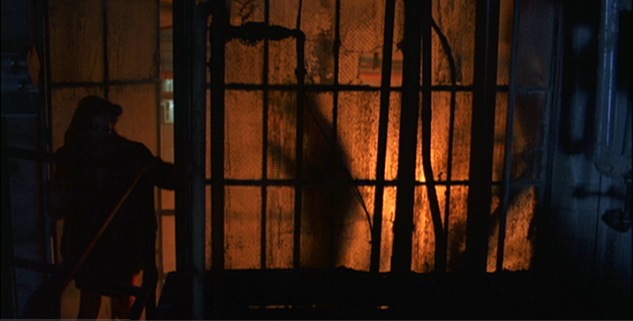
The good guy returns, ever the loner, after rescuing the girl:
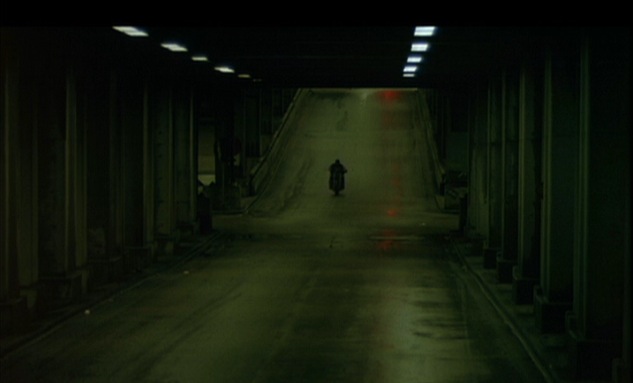
A wonderful shot of the diner around which much of the action centers, seen through the support struts of the El incredibly atmospheric:
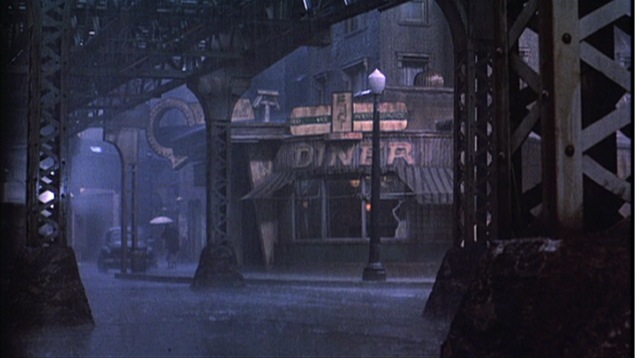
Before the final confrontation between the forces of good and evil, Hill pulls off an overhead tracking shot which equals that incredible one in ˜Once Upon a Time in the West” where the camera rises way above Claudia Cardinale’s head to show the new western town being built. Here Hill may not have the advantage of Morricone’s soaring score, yet he does something magical from a photographer’s perspective. He starts with a shot of the bad guy holding up an air horn to summon his evil team:
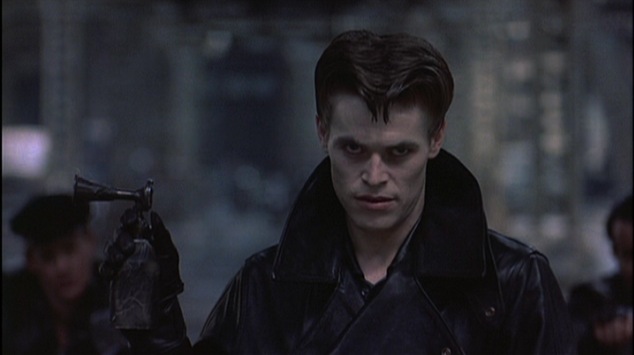
Then, as the camera rises, he switches focus to the evil hordes assembling in the background, the change in focus transforming the bad guy’s face into a death mask:
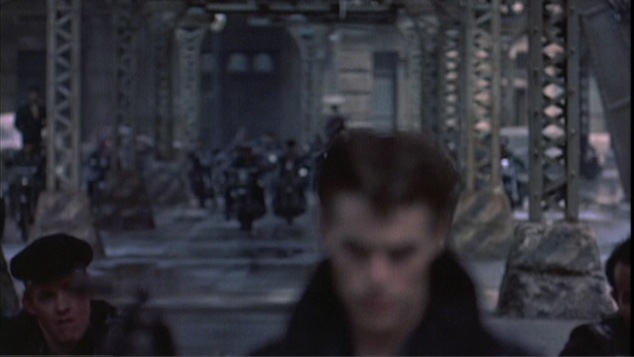
The movie has a nice symmetry to it, ending where it started with the heroine giving a driving performance of a rock number in the broken down hall. Both are by Jim Steinman – the fabulous ‘Nowhere Fast’ to open and the even better ‘Tonight is What it Means to be Young’ to close this masterpiece of a movie:
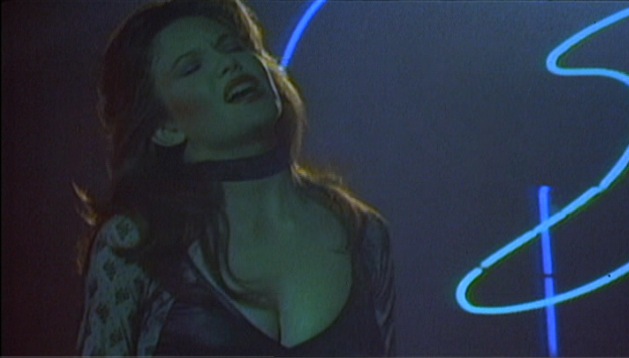
And there’s that neon again, the background to her singing reminding one of nothing so much as a work by the futurist Marinetti.
As for the ending lyrics, beat this:
Let the revels begin
Let the fire be started
We’re dancing for the restless
and the broken-hearted
Let the revels begin
Let the fire be started
We’re dancing for the desperate
and the broken-hearted
Let the revels begin (Tonight is
what it means to be young)
Let the fire be started (Before
you know it it’s gone)
We’re dancing for the restless
and the broken-hearted
Let the revels begin
Let the fire be started
We’re dancing for the desperate
and the broken-hearted
Say a prayer in the darkness for the magic to come
No matter what it seems
Tonight is what it means to be young
Before you know it it’s gone
Tonight is what it means to be young
Before you know it it’s gone
Finally, the picture of the heroine on stage with a foreground of clapping hands, a scene which might as well have been lifted from one of Hitler’s Nuremburg rallies in the late 1930s:
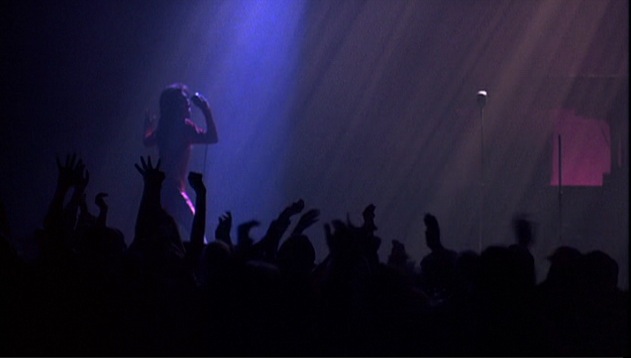
The only thing wrong with this movie is that there is so much of this kind of thing that much is easily missed on a first viewing, but I cannot think of a better reason for an aficionado of film to rush out and install a home theater.
As for photographers, it’s simply a must.
Update December, 2017:
Streets of Fire is finally available on BluRay. Amazon has it.